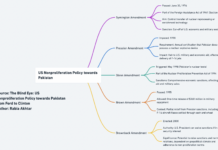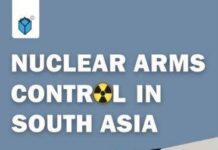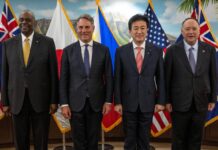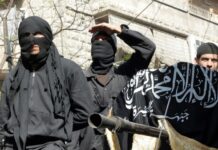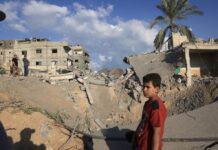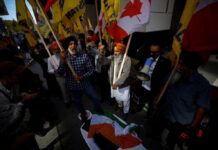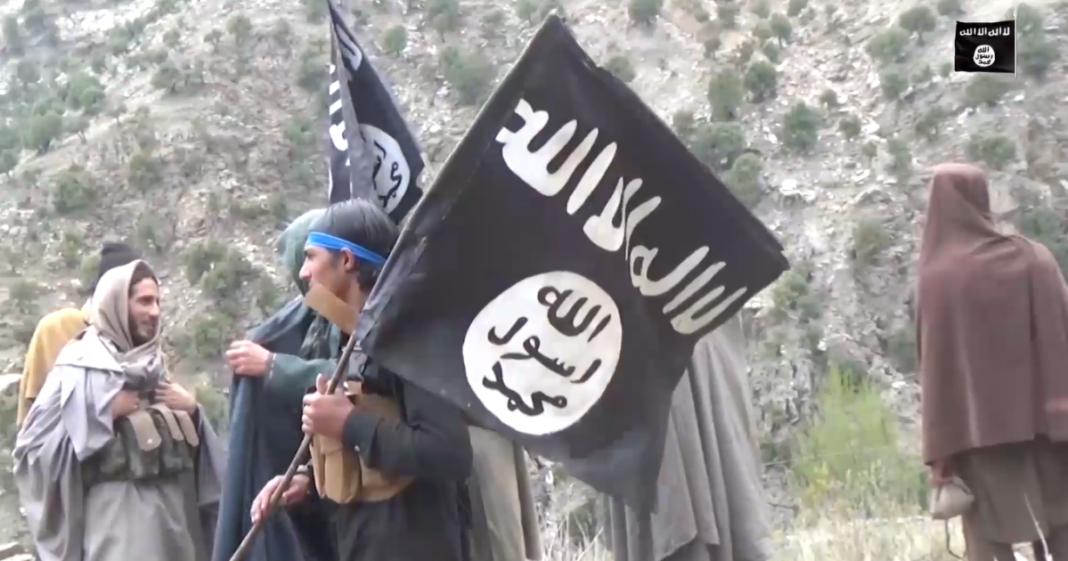Claude Rakisits
It has been over three months since the Taliban walked into Kabul and reclaimed the reins of power on August 15, 2021 after 20 years of fighting a superpower and the largest military coalition in the history of the world. The Taliban encountered little resistance from the Afghan National Defence and Security Forces (ANDSF), whose fighters simply surrendered, went home, or joined the victors. However, it would appear that this was the easy part for the Taliban’s return to power. A potentially bigger and nastier obstacle to the Taliban’s consolidation of power may be brewing on the horizon in the form of the Islamic State of Khorasan (IS-K). Needless to say, the rise of IS-K is bad news for not only Afghanistan but also the region and beyond. Besides, the group will not be easily eliminated as a serious international terrorist threat.
Briefly, the IS-K is a militant group comprising between 500 and 3,000 fighters. It was established in January 2015 as the regional branch of the Islamic State when the latter was at the height of its power in Syria and Iraq. As opposed to the Taliban, who are overwhelmingly dominated by the Pashtuns , the IS-K has a wider ethnic representation in its ranks, including Uzbeks, Baluch, and Uighurs, thus providing potentially a wider appeal. A significant number of its members are Pakistani and Afghan defectors of the Taliban who consider the Taliban too moderate in their implementation of Sharia law. IS-K’s members are Salafists who believe in the implementation of Islam as it was practiced by the first three generations of Muslims. They consider themselves the purest of the pure in the interpretation and implementation of Islam, and, to them, all others are apostates.
Given its uncompromising theological stand, it is not surprising that it is responsible for some of the deadliest and shocking terrorist attacks in Afghanistan over the past few years. What is more worrisome is that its attacks have increased significantly, from 60 in 2020 to well over 300 in 2021. Moreover, according to the UN Secretary General’s Special Representative (UNSGSR) for Afghanistan, Deborah Lyons, IS-K now has a presence in all 34 provinces. It is noteworthy that, until recently, it only had a presence in a few eastern provinces and the capital. While this is difficult to confirm independently, the fact remains that its numbers and operational areas are increasing.
All this is bad news for the Taliban who are still only in the early stages of trying to consolidate their hold on power. Ironically, it means that the Taliban, which had been fighting as a non-state actor using terror tactics for 20 years, have had to overnight transform themselves into a state actor and adapt its modus operandi to one of counter-terrorism and counter-insurgency. To put it mildly, this will be no easy feat to achieve. The Taliban fighters are simply not trained to suddenly adopt a defensive position, after having been on the offensive for the past two decades. There is no guarantee they will succeed without external help. It is important to remember that, under the previous administrations of Afghan Presidents Hamid Karzai and Ashraf Ghani, the ANDSF could rely on western intelligence and American logistical, tactical, and air support, to fight the Taliban and other fellow ideological travelers. However, now that the Taliban are in power and the Americans have left, they will not have that military luxury; they will be alone.
The rise of IS-K is also particularly bad news for the Shia Hazara community which represents around 20% of the population. The Hazaras will feel particularly vulnerable, as Salafists consider Shia Kafirs—not real Muslims. Accordingly, they have been getting special attention for IS-K’s most violent attacks. The barbarity of some of these terrorist attacks is unfathomable. The Taliban have promised the Hazaras that they will protect them. However, given that the Taliban, both in power and out of power, have, in the past, treated the Shia extremely poorly, the Taliban’s promise of protection would be meaningless in the eyes of the Hazaras.
But does the rise of IS-K mean the Taliban is in danger of being displaced by the Islamic State? Not quite yet, but IS-K’s growth will further weaken an already fragile government which has critical issues it needs to deal with quickly. At the top of the agenda are two interrelated issues: the effective collapse of the formal economy and a near starvation situation which is leading the country towards a massive humanitarian crisis as winter fast approaches. This dire situation is a direct result of the international community’s decision to sanction the Taliban for ousting the Western-backed government of President Ashraf Ghani. The US has frozen almost $9.5 billion in assets belonging to Afghanistan’s central bank and stopped shipments of cash. What’s more, the IMF has blocked Afghanistan from accessing about $450 million from the Fund. According to UNSGSR Lyons, Afghanistan needs to have access to international funds. Otherwise, the country will face a certain “humanitarian catastrophe”. According to the World Food Program, more than half the population – about 22.8 million people – faces acute food insecurity, while 3.2 million children under five could suffer from acute malnutrition. The WFP has identified Afghanistan’s current situation as one of the world’s worst humanitarian crises, if not the worst. According to Lyons, such a desperate economic environment could lead people to seek desperate solutions which could facilitate terrorism, human trafficking, and drug smuggling. Similarly, it could shrink the Taliban’s base of support, especially if the IS-K promises a better future.
Turning to the region, the rise of IS-K may unite Afghanistan’s neighbours in their belief that this new terrorist threat needs to be eliminated, or at least its growth needs to be halted. Put differently, whilst no country—except for Pakistan—particularly welcomed the return of the Taliban to power in Kabul, it is in nobody’s interest to see IS-K grow further and possibly topple the Taliban in the future. What is particularly worrisome is that IS-K, as opposed to the Taliban, has a global outlook and aim: to impose its Salafist version of Islam. Moreover, as noted above, IS-K includes members of different ethnic groups, such as Uzbeks, Uighurs, and Baluch, who are opposed to some of their ‘home’ countries’ domestic policies. And given that IS-K is a non-state actor, it will have few compunctions in executing terrorist acts outside and inside of Afghanistan, using foreign recruits in the process. The devastating attack on a Shia mosque killing about 100 people in Kunduz on October 8 by a Uighur militant is a case in point. Accordingly, the IS-K’s modus vivendi should ring alarm bells in the region and beyond, including in Washington.
Accordingly, the international community, led by the US, will need to intervene militarily as soon as possible before IS-K is able to establish a firm geographic foothold as it did in Syria and Iraq. We all recall the huge cost in human terms and treasure it took to dislodge the Islamic State from those areas. The Americans and their coalition partners will need to set aside their dislike of the Taliban and work with the latter in their common goal of defeating IS-K. We must not forget that the American military personnel relied on the Taliban for their protection during their evacuation from Kabul following the devastating IS-K attack on the airport, killing 13 American military personnel, on 26 August 2021. So, there is a precedence for such US-Taliban collaboration.
Having said that, planning an effective and successful military intervention will not be easy given the geopolitical and logistical circumstances. Let us not forget that Washington has withdrawn all its military assets from Afghanistan and has virtually no human intelligence on the ground. Instead, the Americans may repose faith in drone strikes. However, they would only have a limited military effect. Needless to say, there is absolutely no political appetite in the US—the mid-term elections are in less than a year—or in any other coalition partner country to put boots on the ground. This places Washington and other Western capitals in a real quandary. And the leadership of IS-K knows it. This is why IS-K is not about to leave the scene anytime soon.
Significantly, the rise of IS-K, even before the Americans had left Afghanistan, put paid to President Biden’s July 2021 assertion that the US had met its objectives, and that terrorism was not emanating from Afghanistan. Be that as it may, it is in no one’s interest—starting with the people of Afghanistan, to see IS-K grow further. Accordingly, the international community has a duty to assist the Taliban combat this potentially more dangerous enemy. As UNSGSR Lyons said at a press conference recently, “to abandon the Afghan people now would be a historic mistake”. And let’s not forget President Biden’s promise to the Afghan people when he announced the complete US troop withdrawal from Afghanistan: “we’re going to stick with you”. President Biden may well go on to regret his decision to leave Afghanistan.
Dr.Claude Rakisits is an Honorary Associate Professor in the Department of International Relations at the Australian National University in Canberra, Australia.



